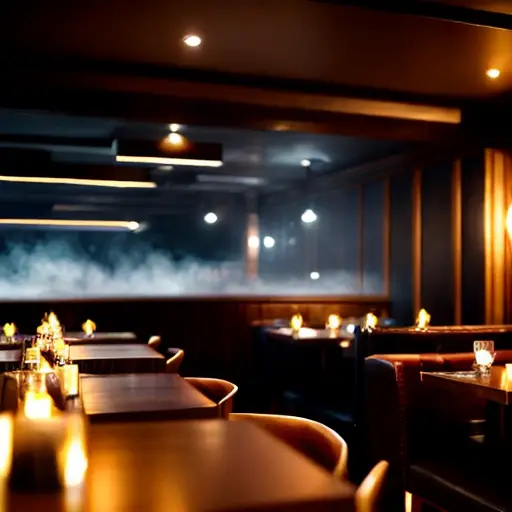The Art of Assessing Ambiance and Service
When it comes to rating a restaurant, ambiance and service play a crucial role in the overall dining experience. The ambiance sets the tone for the meal, creating a welcoming and comfortable atmosphere for guests. Factors such as lighting, music, decor, and cleanliness all contribute to the overall ambiance of a restaurant. Additionally, attentive and friendly service can greatly enhance the dining experience. From the moment guests are greeted at the door to the moment they receive their check, the level of service can make or break a restaurant's rating. Assessing ambiance and service requires paying attention to the details and considering how they impact the overall dining experience.
Decoding the Menu: Evaluating Food Quality and Variety
An interesting fact about how to rate a restaurant is that the ambiance and decor can significantly influence the overall rating. Studies have shown that people tend to rate the food and service higher when they are in a visually appealing environment. This phenomenon, known as the 'halo effect,' suggests that our perception of a restaurant's quality can be influenced by factors unrelated to the actual food and service provided. So, next time you're rating a restaurant, consider how the ambiance might be subtly influencing your judgment!
Decoding the menu is another important aspect of rating a restaurant, as the quality and variety of food offerings can greatly influence the overall dining experience. When evaluating food quality, consider factors such as freshness, presentation, and taste. A diverse menu with a range of options to cater to different dietary preferences and restrictions is also a key factor in rating a restaurant. Additionally, the creativity and uniqueness of the dishes can set a restaurant apart and contribute to a higher rating. By carefully examining the menu and sampling a variety of dishes, diners can better assess the food quality and variety offered by a restaurant.
Unveiling the Culinary Experience: Judging Taste and Presentation

When it comes to rating a restaurant, judging taste and presentation are essential components of the culinary experience. The taste of the dishes served is arguably the most important factor in determining the quality of a restaurant. Diners should pay attention to the flavors, seasonings, and overall execution of each dish to assess the culinary expertise of the kitchen. A well-balanced dish that delights the taste buds and leaves a lasting impression is indicative of a high-quality restaurant. Additionally, the presentation of the food plays a significant role in the overall dining experience. Aesthetically pleasing dishes that are thoughtfully plated demonstrate attention to detail and can elevate the dining experience.
In evaluating taste and presentation, diners should also consider the use of fresh, high-quality ingredients in the dishes. Fresh ingredients not only enhance the flavor of the food but also reflect the restaurant's commitment to quality. Furthermore, the creativity and innovation displayed in the dishes can showcase the culinary prowess of the chefs. Unique flavor combinations, innovative cooking techniques, and artistic presentation can all contribute to a memorable dining experience and a higher rating for the restaurant.
Another aspect to consider when judging taste and presentation is the consistency of the dishes. A restaurant that consistently delivers well-executed, flavorful dishes with impeccable presentation demonstrates a high level of professionalism and dedication to excellence. Consistency in taste and presentation across different dishes and visits is a hallmark of a top-rated restaurant. Diners should take note of any inconsistencies in taste or presentation, as they can be indicative of a lack of attention to detail or quality control in the kitchen.
In addition to taste and presentation, the portion size of the dishes should also be taken into account when rating a restaurant. Generous portion sizes that offer value for money without compromising on taste or presentation can enhance the overall dining experience. On the other hand, overly large or small portion sizes may impact the dining experience negatively. Diners should consider whether the portion sizes are appropriate for the price and whether they leave diners feeling satisfied without being overwhelmed. Overall, judging taste, presentation, ingredient quality, consistency, and portion size are all important factors in rating a restaurant and determining the overall culinary experience.
Beyond the Plate: Considering Value for Money and Overall Experience
A fun fact about rating a restaurant is that the Michelin Guide, which is considered one of the most prestigious restaurant rating systems, uses anonymous inspectors who visit each restaurant multiple times to ensure consistency in their ratings. These inspectors are so secretive that even their closest family members do not know about their profession!
When rating a restaurant, it is important to consider factors beyond the plate, such as value for money and the overall dining experience. Value for money encompasses not only the price of the dishes but also the quality of the food, portion sizes, and the overall dining experience relative to the cost. Diners should assess whether the prices are justified by the taste, presentation, and portion sizes of the dishes. Additionally, the overall experience, including factors such as ambiance, service, and the attentiveness of the staff, can greatly impact the perceived value of a restaurant. A restaurant that offers a memorable dining experience at a reasonable price point is likely to receive a higher rating from diners.

